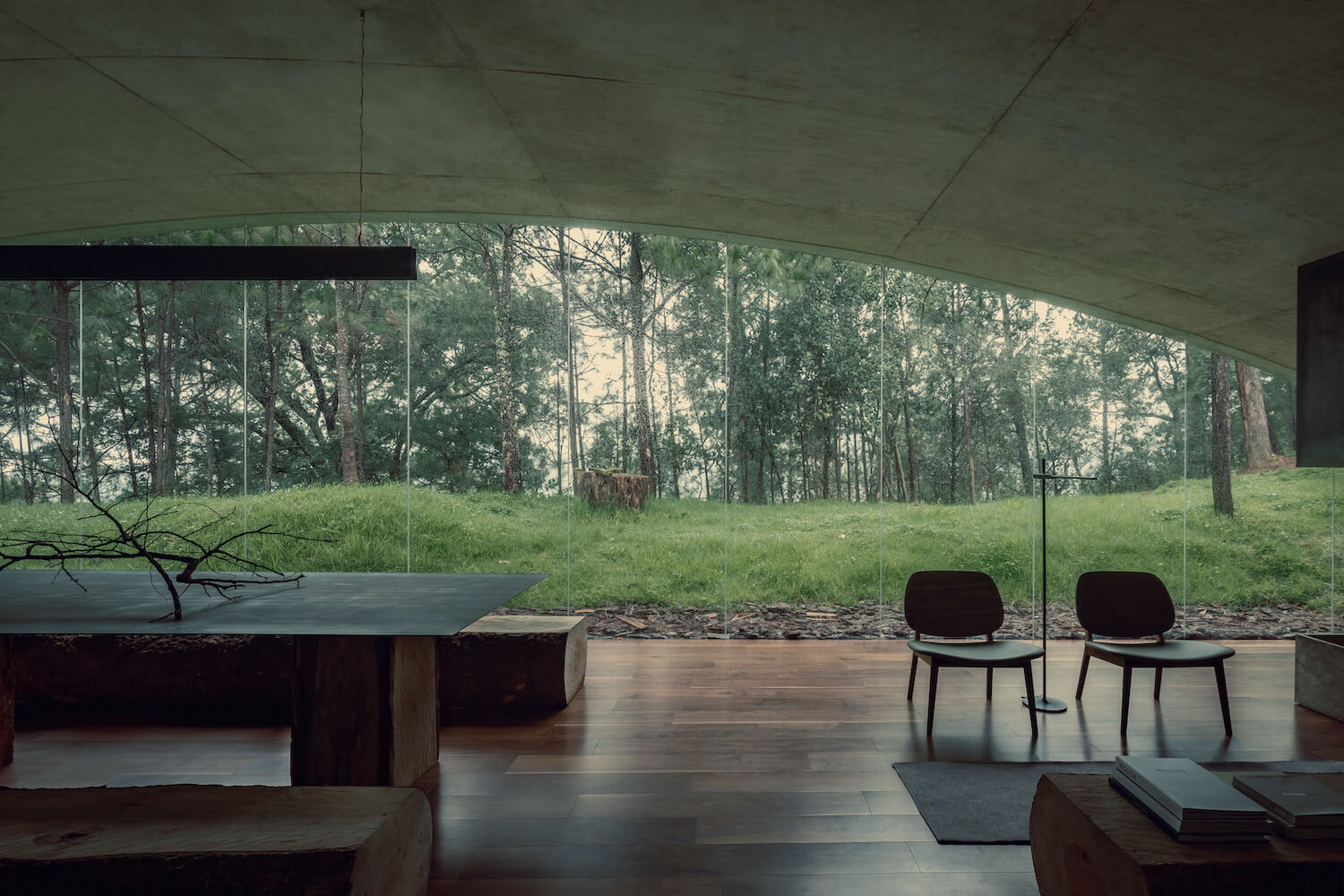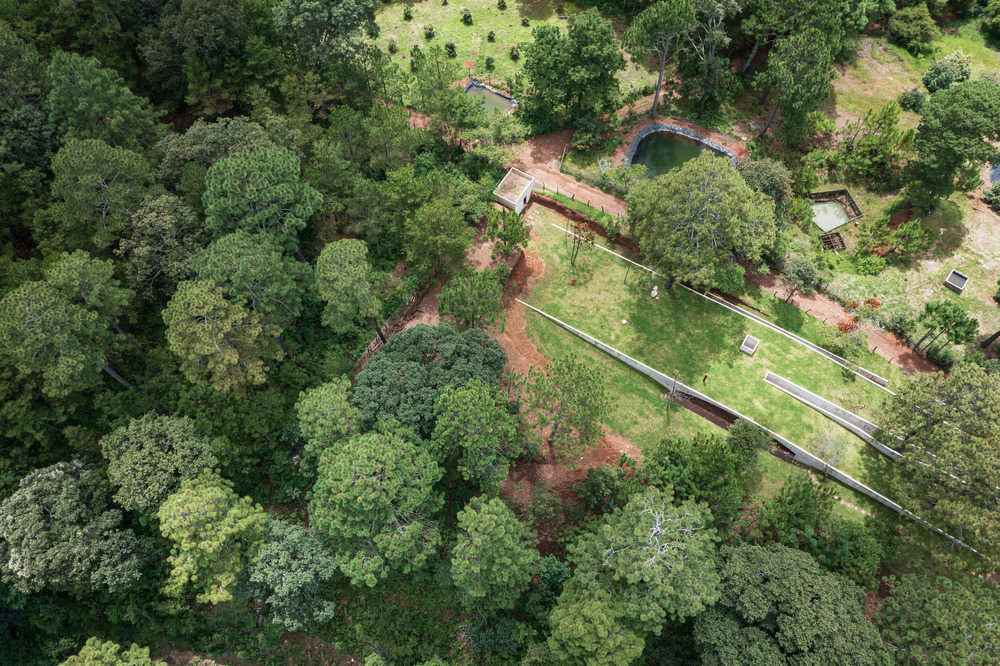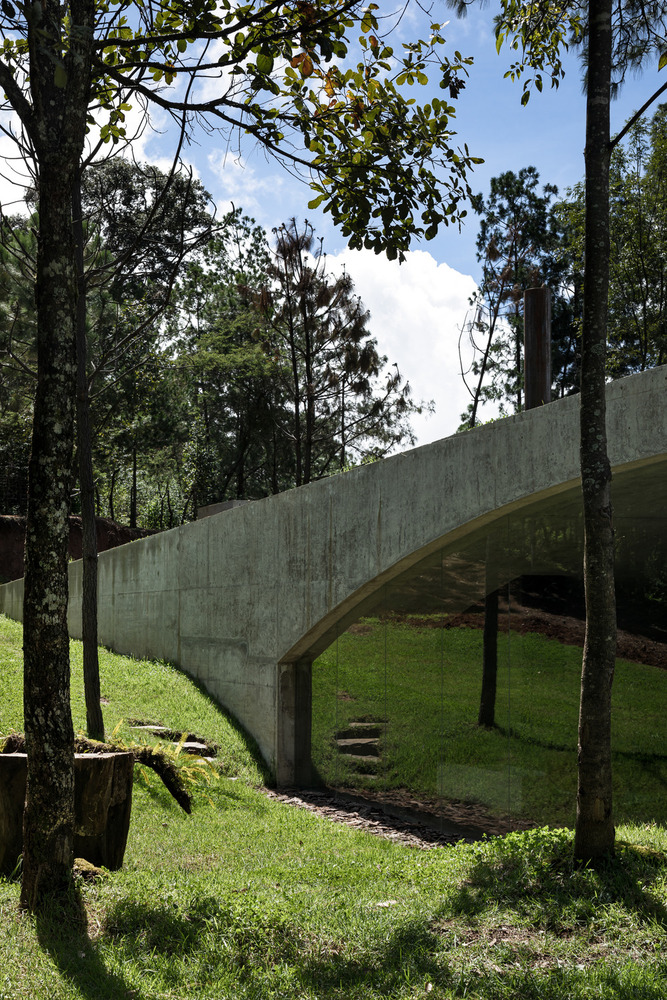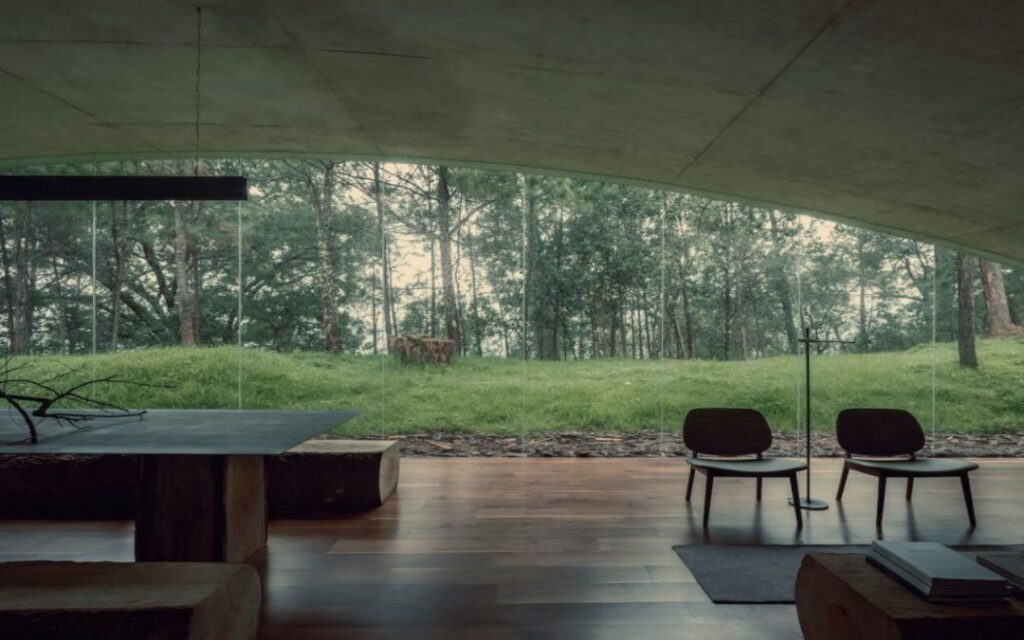The architectural mission, in this case, was to make the architecture itself invisible. So it was. In fact, “La Colina contra la Cañada”, built 25 km from the city of Morelia, in the state of Michoacàn (Mexico), is literally immersed in nature. Designed and built by HW Studio with the help of engineer Antonio Rangel, despite the brutalist style, the construction is almost imperceptible from the outside. Hidden and enveloped by earth and vegetation, surrounded by trees, almost a modern cave, the house responds as completely as possible to the client’s request.
“The client wanted a refuge in the forest to disconnect from the city,” explains Rogelio Vallejo Bores of HW Studio.
THE HILL IN FRONT OF THE CANADA: A REALIZATION BY HW STUDIO

A request taken literally by the designers, who imagined the earth rising like a sheet to cover and protect this shelter, from which they then expelled the outside world as much as possible: no television, no internet, hidden lights and refrigerators. “We are in a place without time,” emphasizes Bores.
“It was important,” he explains in the video, “that you couldn’t even perceive the architecture of the house and that, only at a certain point along the way, you began to glimpse something that hinted at the presence of a structure.” The hallway that also hides the entrance between two walls is narrow, accessed by a staircase and emphasizes the sought-after solitude.
The interior is undoubtedly “minimal”: few furniture, soft colors, wood to balance the cold of the bare concrete, steel for the fireplace, the door and the table.
Materials and colors, therefore, also reduced to a minimum, to accentuate the idea of essentiality.
AN EASTERN TOUCH LOOKING FOR HARMONY AND MEDITATION

A minimalism with a clear oriental imprint, “registered trademark” of HW Studio. Founded in 2010, the studio was born with the intention of uniting East and West in art and philosophy, in search of peace, meditation and harmony. The same name, they clarify on their website, was born “from the union of the letter H; that in Spanish the silent letter is considered, that is, the graphic representation of silence; and the W that derives from the Japanese concept Wabi Sabi; a concept that has no translation into Spanish, nor direct equivalence with any Western concept but that could be understood as the beauty of impermanence.” It is no coincidence that Roges refers to the house transformed, in the future, into a ruin. From the imperceptible to the invisible, completely returned to the earth, material for future archaeology. A praise, therefore, to what ends, to a cycle of birth and end, in opposition to architectural anthropocentrism, an ode to sustainability, to leaving no trace.
“If the forest had been our client,” Roges continues, “how would it like us to treat it? So we decided not to disrespect him. The same road that leads from Morelia to the site provided us with the main suggestion: the architecture had to be so subtle as not to disturb the immersion in nature. The forest is still king.” With an area of 250 m2, the house faces directly outside through two side windows that facilitate the integration between inside and outside. On one side the living area, facing the forest, on the other side the sleeping area that overlooks a patio to provide greater privacy.
“ARCHITECTURE HAD TO BE THE ACCENT IN THE WORDS OF THE POEM, NOT THE POEM”

“The architecture,” explains HW Studio, “had to be in this case the accent on the words of the poem, the comma, or in any case some question mark, but it should never be the poem itself. The poem was already given by the pines, oaks, huizaches, the fireflies, the road, the fence, the neighbor’s pool of water, the earth, the orchard and the nightingale. The accents in the poem were four concrete walls that emerged surprisingly from the landscape; Two of them contain the earth of this new hill that was generated by lifting the sheet and two others that frame the access and escort the guest on their way into the house. “. Poetry, after all, is simplicity.
Emmanuel Raffaele Maraziti

